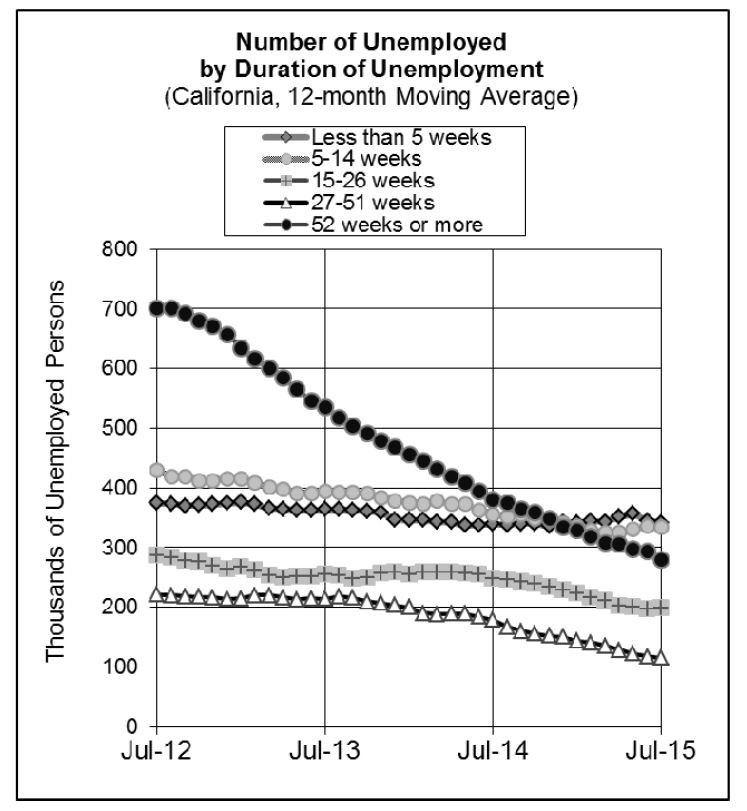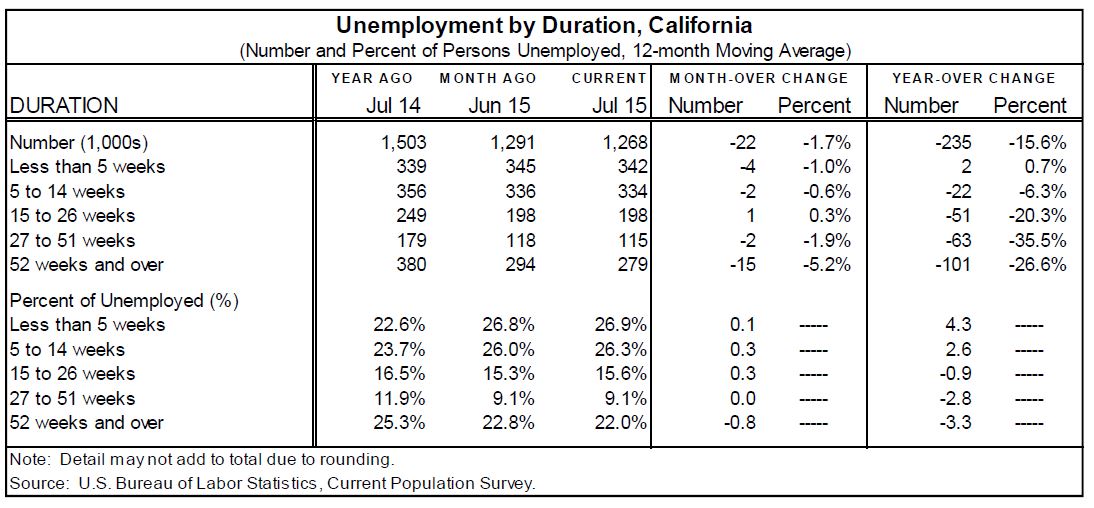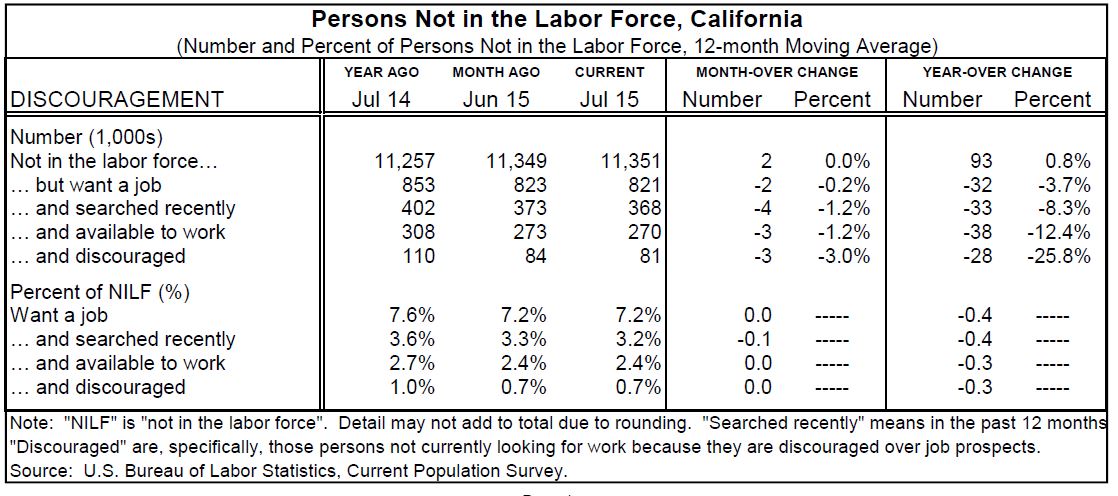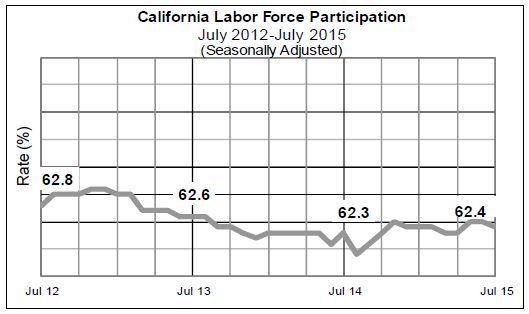In conjunction with its monthly state jobs report (the July 2015 report is discussed in our blog post here), the state's Employment Development Department releases a variety of data packages concerning unemployment in California. In this post, we examine some of the new data concerning unemployment and labor force participation in California as of July 2015.
Long-Term Unemployment Continues to Fall. The number of long-term unemployed in California (those classified as unemployed for long periods according to official labor agency definitions) has been falling for some time. In particular, as shown above, the numbers of those estimated by government surveys to be unemployed for 27-51 weeks and 52 weeks or more, respectively, have been declining. The EDD table below shows the latest figures as of July. Compared to 12 months ago, the number of Californians classified as unemployed for 27-51 weeks has fallen 35.5%, while the number unemployed for 52 weeks and over has fallen 26.6%.
Most Job Growth in Full-Time Jobs. As shown below, over the past year, most California job growth has been in jobs where the usual work week schedule is reported to be usually full-time (35 or more hours per week). Specifically, according to the 12-month moving average of net job changes reflected below, about 470,000 net new jobs over the past year have been full-time, versus 87,000 net new part-time jobs. (Complexities in the survey data result in these job growth estimates being somewhat different from those reported elsewhere in the data.) The percentage of those employed usually working full time is reported to be up slightly over the past year, reaching 80.0% as of July. The number of Californians working part time for "economic reasons" (typically inability to find full-time work) has fallen by 9.2% over the past year to an estimated 1.1 million people.
Measures of Those Discouraged About Job Searching Have Improved. Official government unemployment statistics consider only workers "in the labor force." Among those not in the labor force (NILF) and, therefore, not counted in official unemployment statistics, are those who have not reportedly searched for a job within the last four weeks. As shown in the EDD table below, the number of Californians who are NILF, but who are available to work or discouraged (specifically, those persons not currently looking for work because they are discouraged over job prospects), has fallen over the past year. The number not in the labor force, but reported to be discouraged in surveys, has fallen by 25.8% over the past year.
Alternative Labor Underutilization Measures. The federal and state governments now provide alternative estimates of "labor underutilization" beyond the official unemployment rate. For example, the "U-6 measure" (which we have discussed previously on this blog) considers not only the official unemployment statistics, but also "marginally attached" workers, those employed part-time for economic reasons, and discouraged workers. The U-6 measure has been said to measure the "unemployed, underemployed, and those who are not looking but who want a job." As of mid-2015, California's U-6 measure was roughly double its official unemployment rate. As of July, 1.18 million Californians were counted in the official unemployment rate. Accordingly, if the U-6 measure were used instead of the official unemployment measure, somewhere around 2.4 million Californians would be counted as unemployed or "underutilized" in the job market.
Overall Labor Force Participation Rate Has Been Essentially Steady Recently. Down from past decades, as it is in most of the country, the state's labor force participation rate (the civilian labor force as a percentage of the civilian noninstitutional population) decreased slightly to 62.4% in July. As shown below, this rate has been just over 62% for most of the past year.





